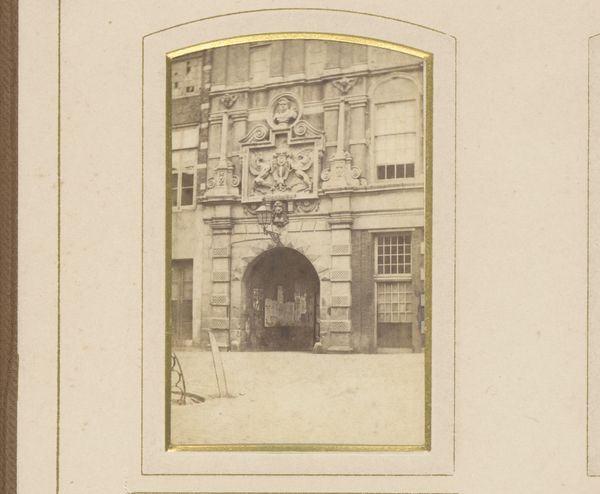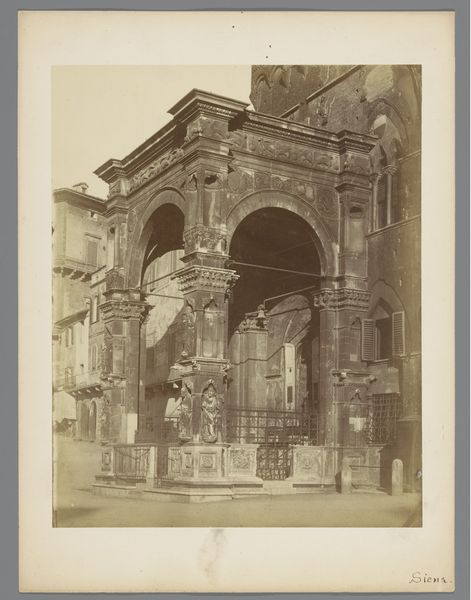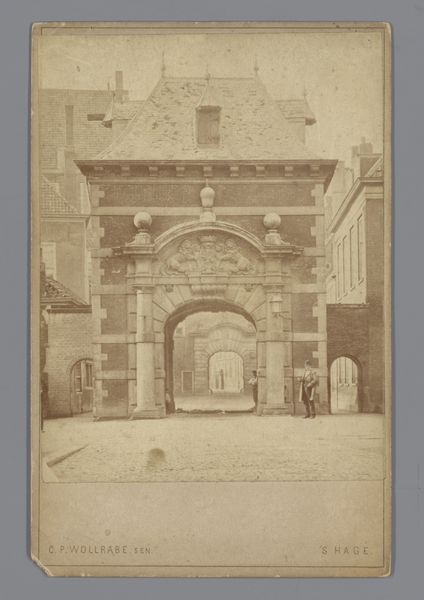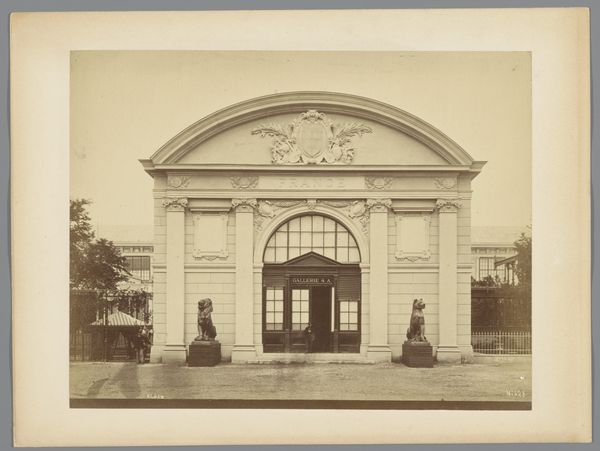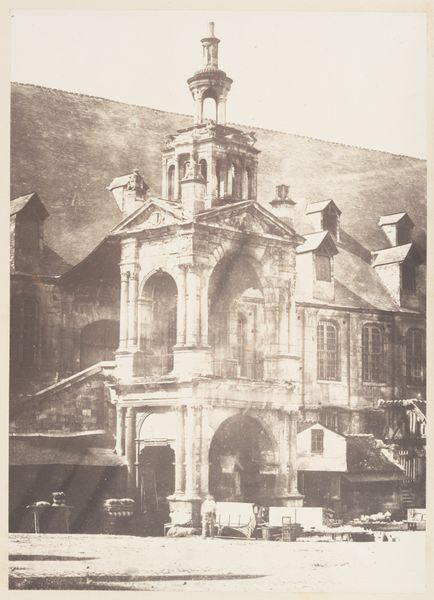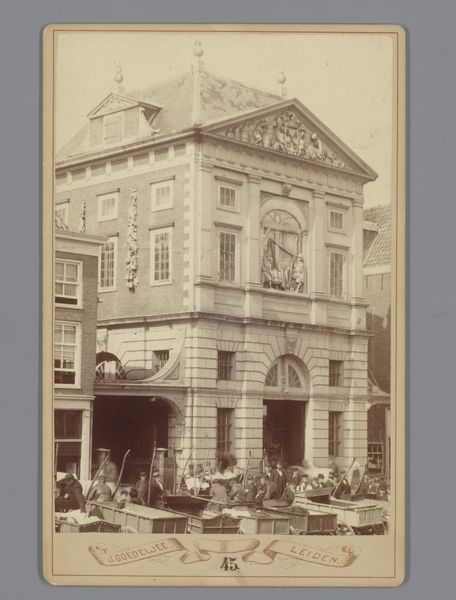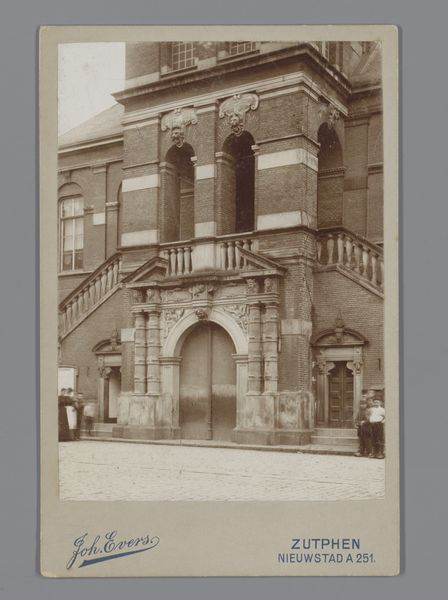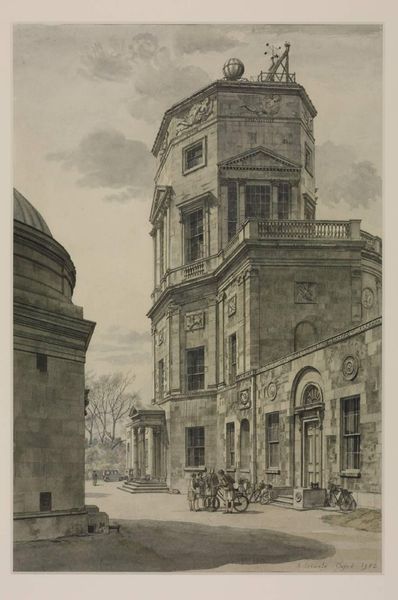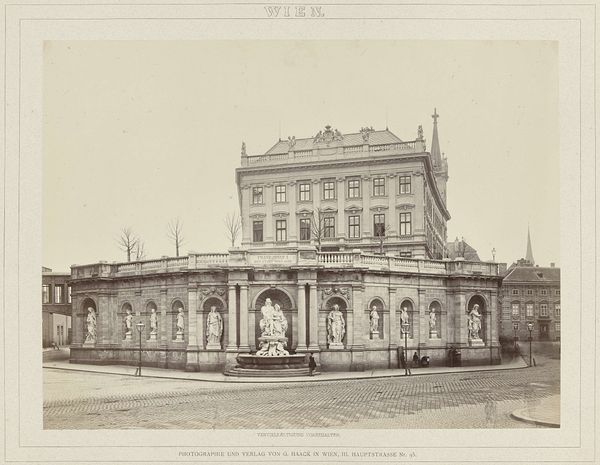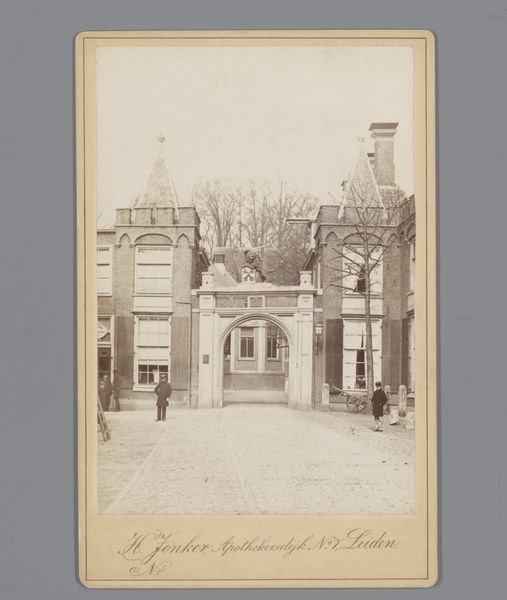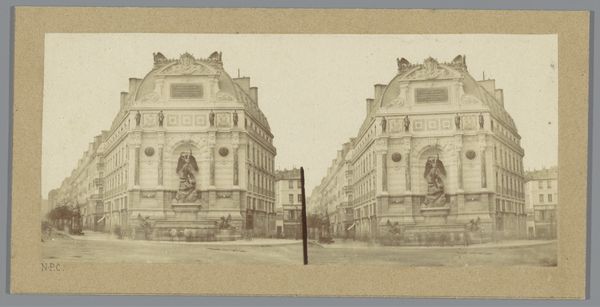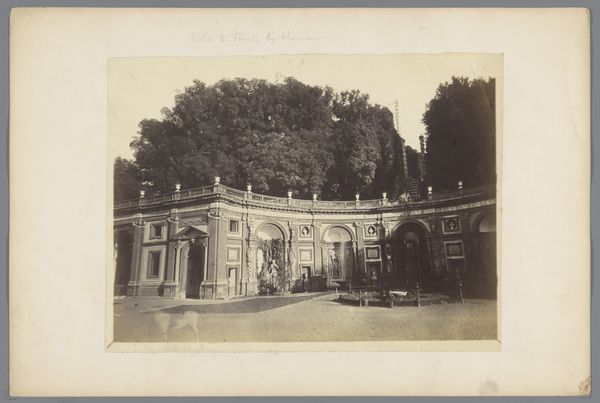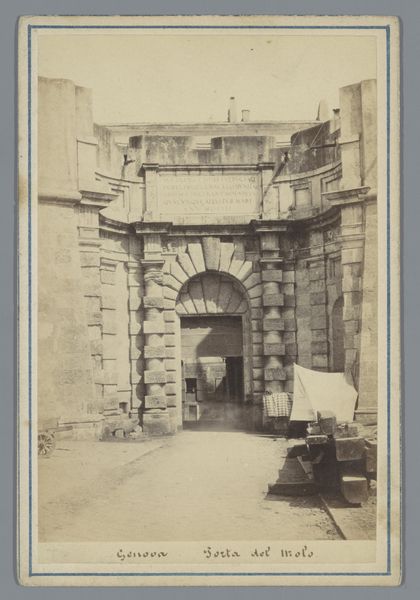
albumen-print, photography, albumen-print, architecture
#
albumen-print
#
16_19th-century
#
cityscape
#
street lighting
#
historic architecture
#
photography
#
city scape
#
cityscape
#
history-painting
#
albumen-print
#
architecture
Dimensions: 5 1/2 x 4 in. (13.97 x 10.16 cm) (image)11 x 14 in. (27.94 x 35.56 cm) (mount)
Copyright: Public Domain
Editor: This captivating image, titled "Temple Bar," is an albumen print of unknown date housed here at the Minneapolis Institute of Art. It’s remarkable how the photographer captured the weight and texture of the stone. What's your take on this piece? Curator: It's compelling when considered through its material and productive conditions. The albumen print process itself – layering egg whites and silver salts on paper – was labor intensive. This immediately challenges a simple reading of the photograph as purely documentary. How do you see the 'cityscape' here in terms of material production and labor? Editor: I see what you mean! I was initially just drawn to the historical architecture. Considering albumen prints and labor, it brings attention to the controlled social forces that the construction represents, since materials had to be secured, mined, transported and constructed.. It suggests that the construction may have been a collaboration between photographers, chemists, manual labourers, each contributing their specialised skills. Curator: Exactly. The act of photographing it and printing it required resources, capital, a studio. Who had access to create and consume such images? How does it perpetuate social standing, and how may class play a role in the imagery of “Temple Bar”? Editor: So, it isn't just a beautiful, historical structure, but a physical manifestation of social and economic relationships. Thinking about it that way really shifts my perception! It also changes the historical meaning, it means the photo might be connected with commerce and social power through visual documentation. Curator: Precisely. The photographer’s choice, the materials used, and the final distribution become social and political acts. Editor: It all connects: material, process, and ultimately the story it tells about 19th-century society. Thanks!
Comments
No comments
Be the first to comment and join the conversation on the ultimate creative platform.
